Mother TreesMother trees is a term, coined by Canadian forest ecologist Suzanne Simard, which stays for the biggest trees in a forest that are connected and communicate with the other trees and plants. The Mother Tree will typically be the dominant, larger, older tree in a network which controls and determines the nutrient transfers for that network. They essentially manage the resources and take care of the trees in need. There are about 22,000 monumental trees in Italy, centuries-old and millennial. Among these, 150 are defined as having “exceptional historical or monumental value”. This photographic project is a journey to some of the oldest trees in Italy (+ 500 years-old) and a collection of stories and traditions regarding these beings and their interactions with the community of humans who, still today, take care of and live peacefully in the shade of these giants. Published on National Geographic in September 2021 |
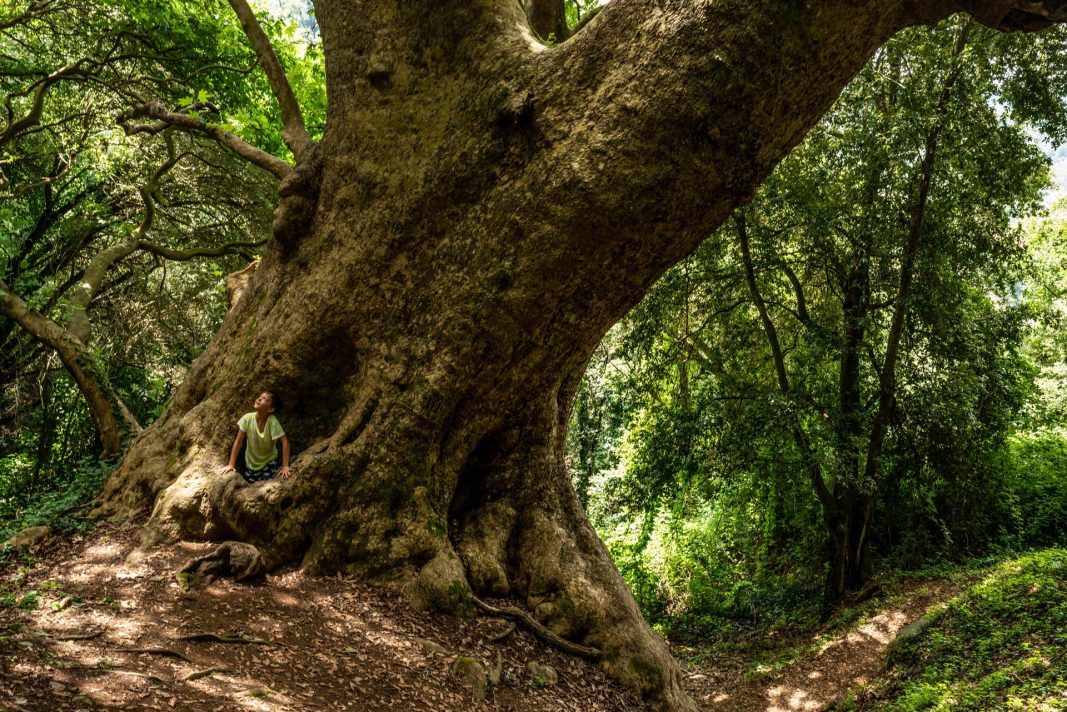
A boy comes out of a hole in the trunk of the huge plane tree of Curinga. The tree is estimated to be 1000 years old. The circumference of the trunk is 20 meters and reaches a height of 21 meters. The huge tree is also called "Vrisi", a term that in the local dialect indicates the word "stream". The environment of the Calabria Serre, where Curinga is settled, is in fact very rich in streams and springs. Curinga (CZ), 20 luglio 2020.
|
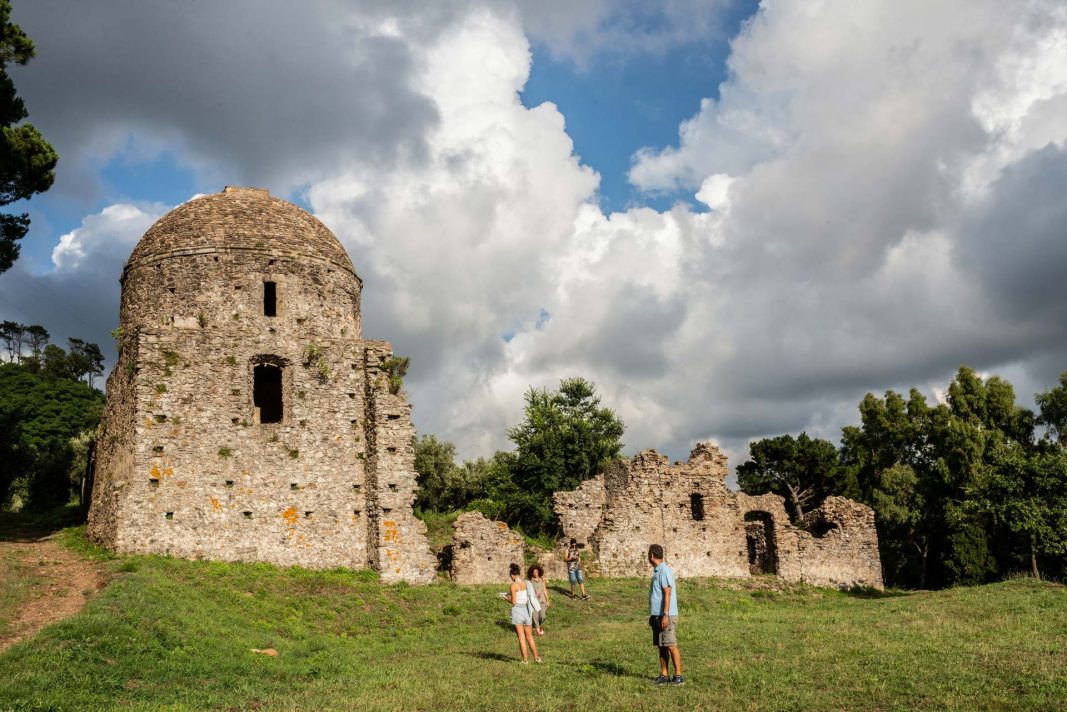
Some tourists visit the ruins of the Hermitage of Sant’Elia Vecchio in Curinga. It is not known the exact date of the building, but it must have already existed since year 1,000 a.C., a time when Roberto il Guiscardo transferred the
hermitage under the ownership of Santa Euphemia Benedictine Abbey. Probably the origin of the plane tree is due to a Basilian monk, arrived in Curinga from the actual Armenia, who took with him a young plant of Platanus orientalis from his native land and planted close to the hermitage. Curinga (CZ), 19 luglio 2020.
|
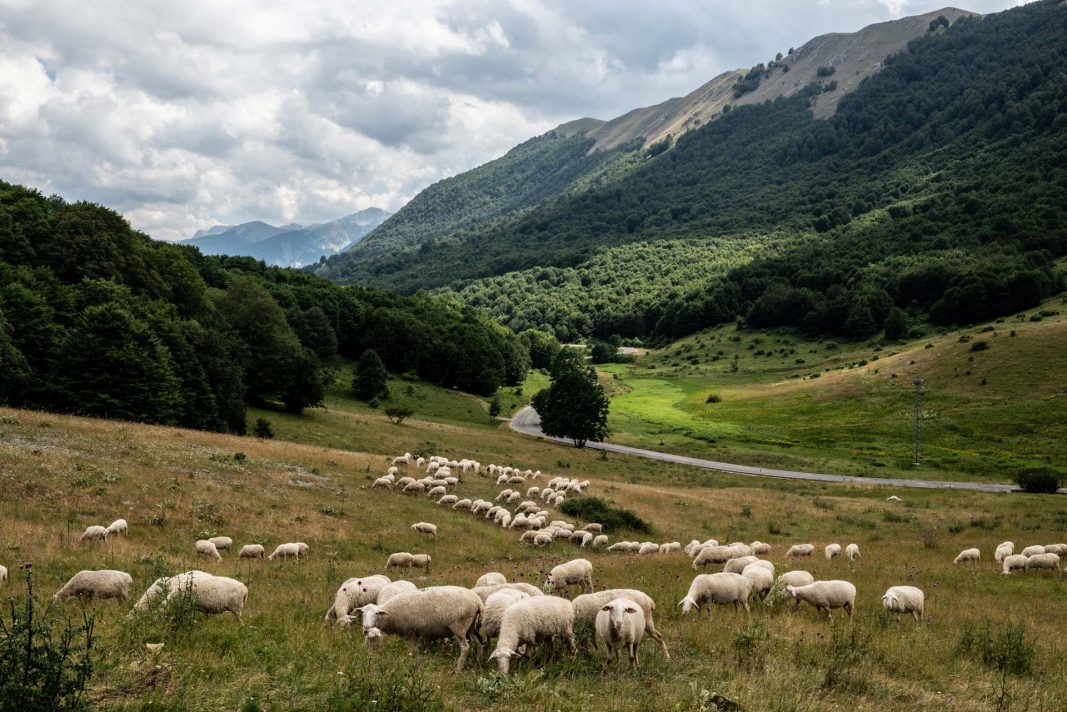
Sheep herd grazes at Passo Godi, between the municipality of Scanno and Villetta Barrea, inside the territory of Abruzzo National Park. Under the forest that covers the Godi mountain, "Pontone" beech tree grows since 800 years ago. In the distance Mount Meta (2245 m). Passo Godi (AQ), 15 luglio 2020.
|
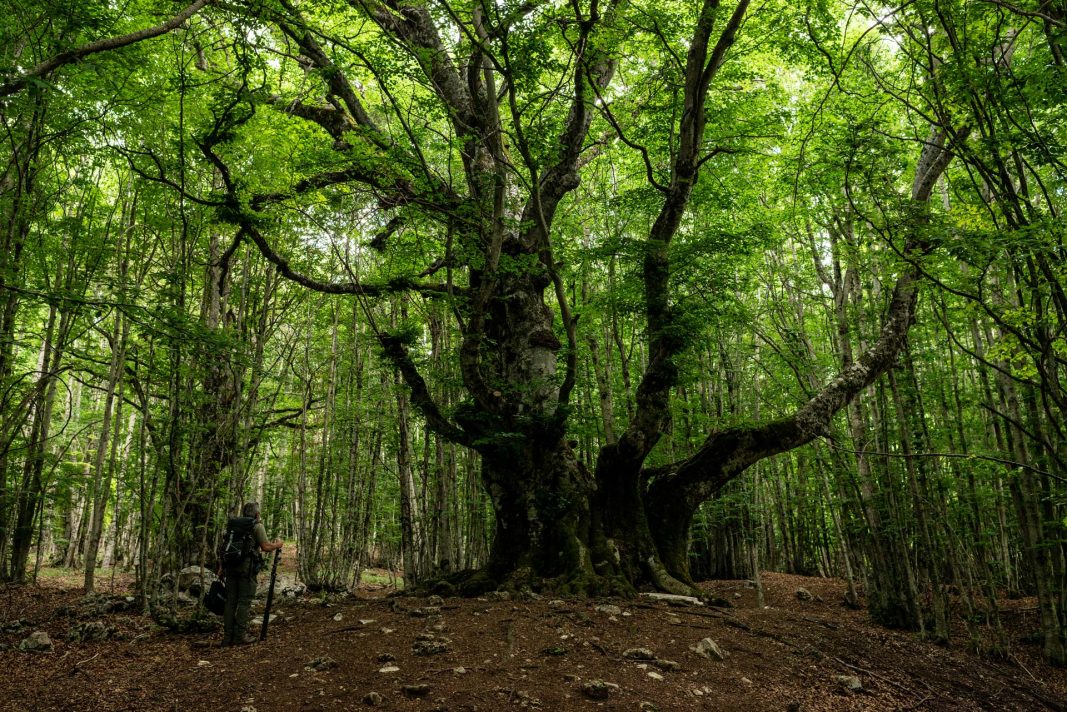
National Park ranger Alberto Cocuzzi looks at "Pontone" beech tree. The tree belongs to Fagus sylvatica species. It consists of the concretion of numerous stems which were separated in youth but with a common root apparatus. Then, their barks joined together over the centuries. "Pontone" beech tree is
21m in height and has a circumference of 8.30m. Passo Godi (AQ), 15 luglio 2020.
|
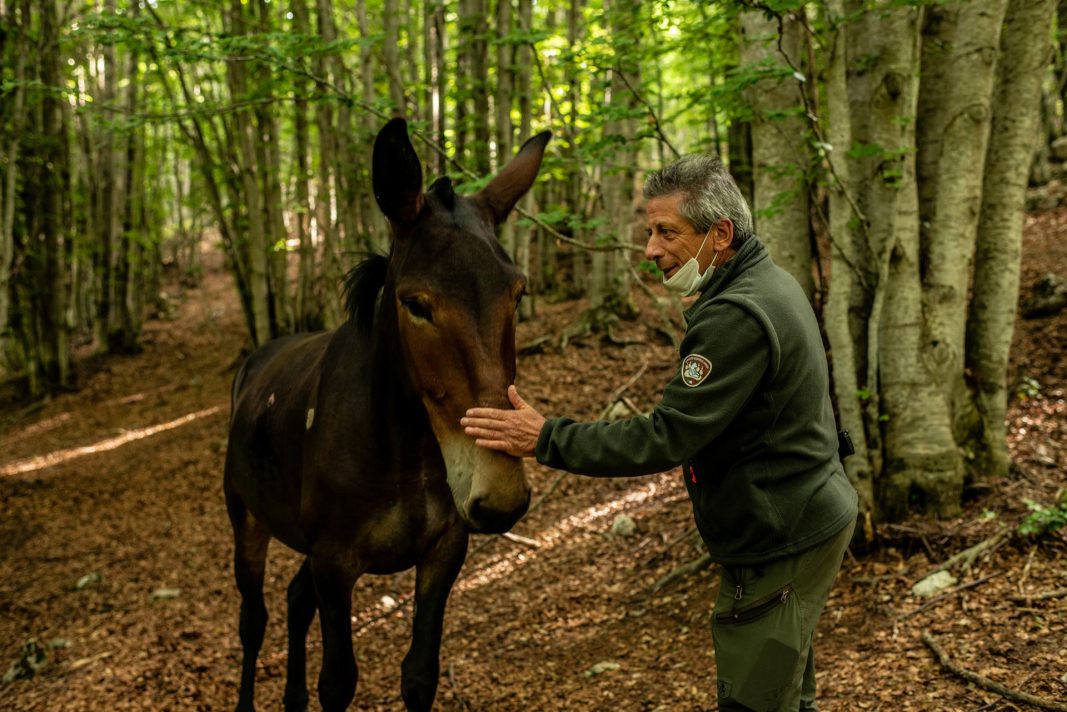
National Park ranger Alberto Cocuzzi strokes one of the mules used to transport wood logs from the forest. Mules are left to freely graze in the beech forest after a day's work. The wood collection activity from the forest is
regulated within the Abruzzo National Park and provides for civil wood. Beech is an arboreal species mostly used for domestic heating. Passo Godi (AQ), 15 luglio 2020.
|
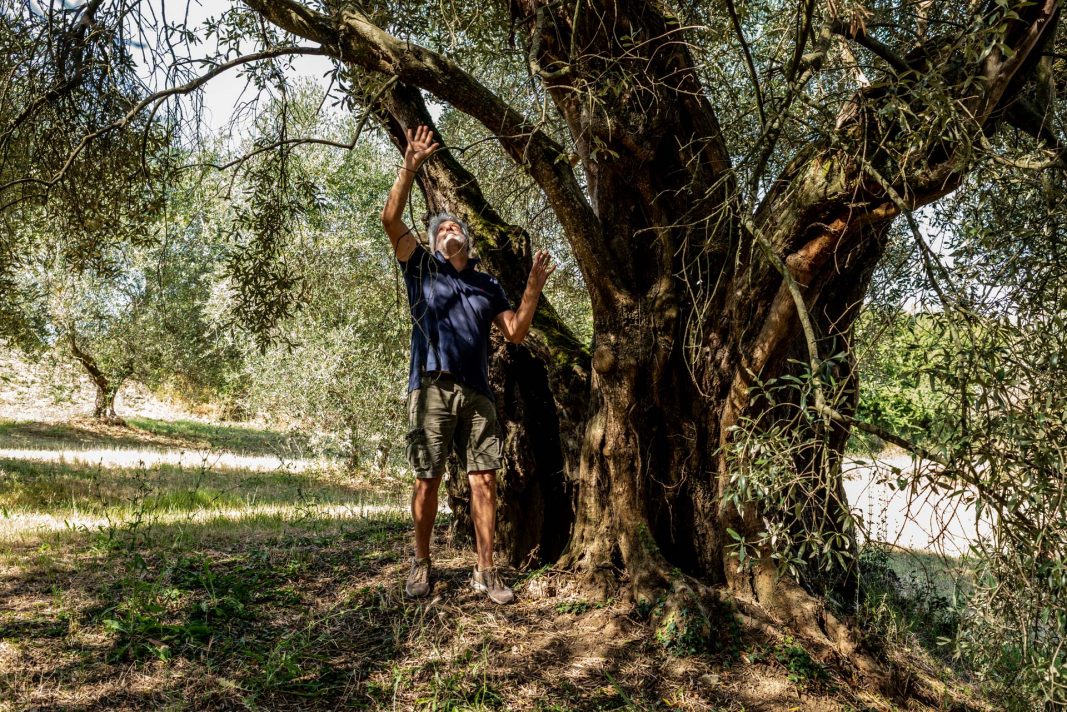
Spending time everyday with his 2,500 years old olive trees, De Ponti could appreciate the continuous adaptation of these trees to environmental stimuli. De Ponti loves to create small sculptures of stones in equilibrium on sticks between olive trees' trunks: a breath of wind, a movement of the ground and the stones fall. With patience De Ponti repositions them, like a mantra, a meditation inspired by the life of the olive trees, which saw the birth and fall of populations, wars, extreme weather events, cuts, yet they have always found
resources to continue to thrive and turn their crown to the sun. Villastrada (PG), 13 luglio 2020.
|
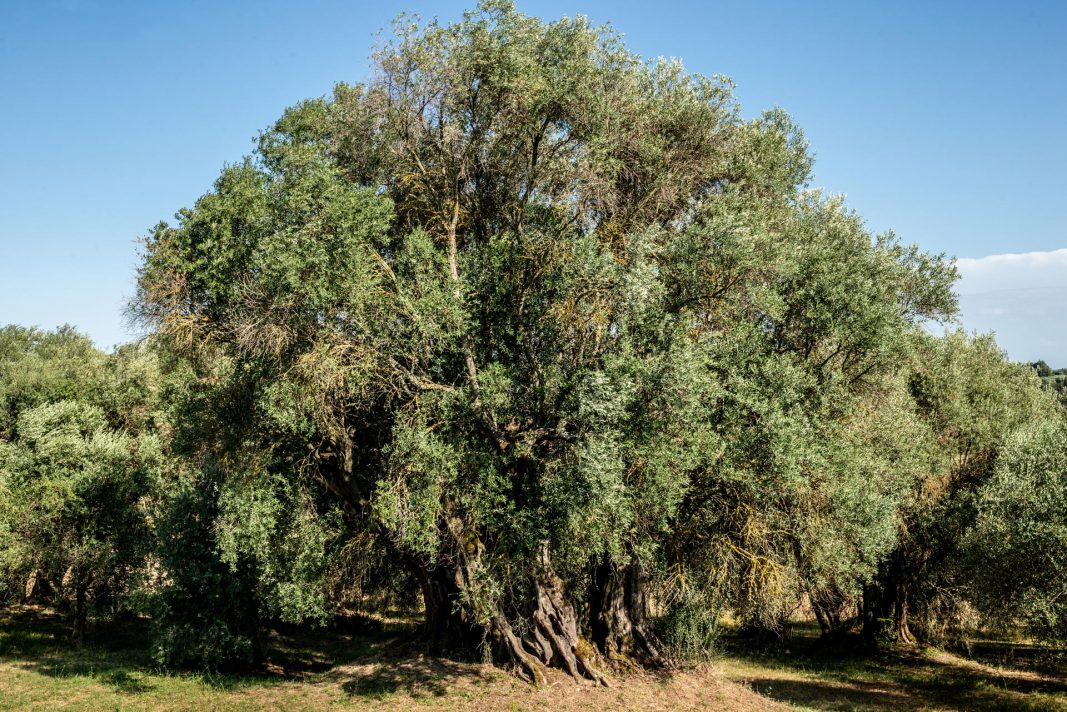
Villastrada olive trees is a group of about ten Olea europea centuries-old, the oldest and largest one is dated to be from the 5th century b.C. (2500 yearsold). The gigantic olive tree has lost its center and remains alive in parts of its outer trunk. It is 14m in height, 12m of circumference. Villastrada (PG), 13 luglio 2020.
|
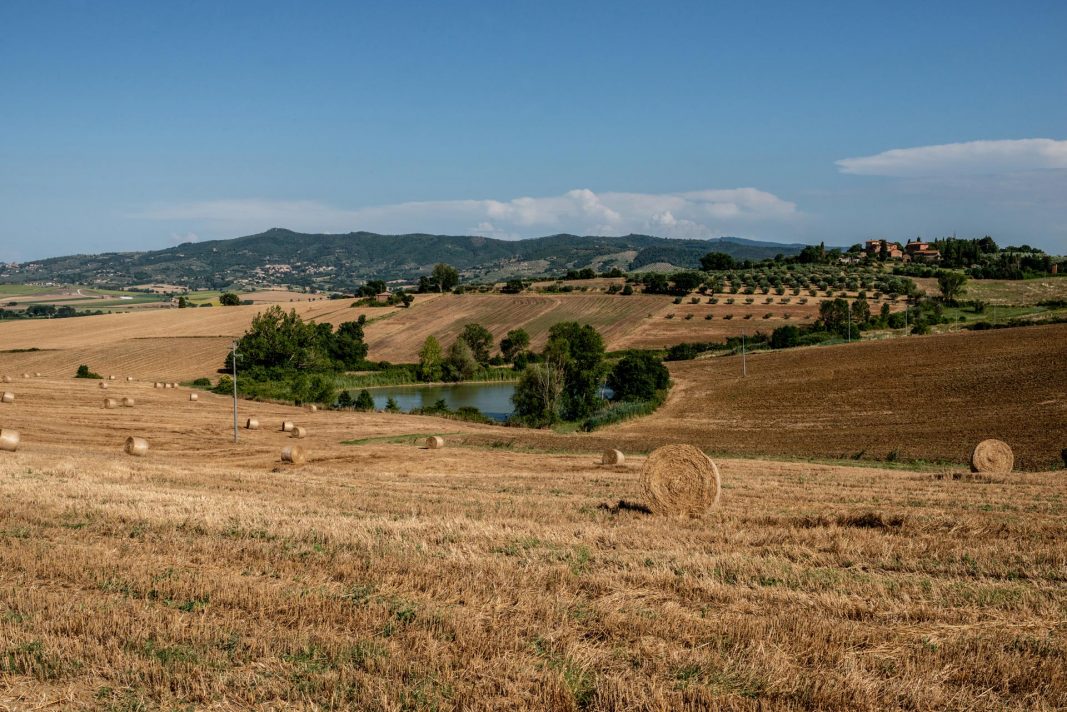
A view of the countryside around De Ponti olive orchard. Olive trees grooved once all over several hectares along the gentle hill overlooking the village of Cantagallina but, after a very strong frost in 1985, today only the ten ancient olive trees remain on the top of the hill. Villastrada (PG), 13 luglio 2020.
|
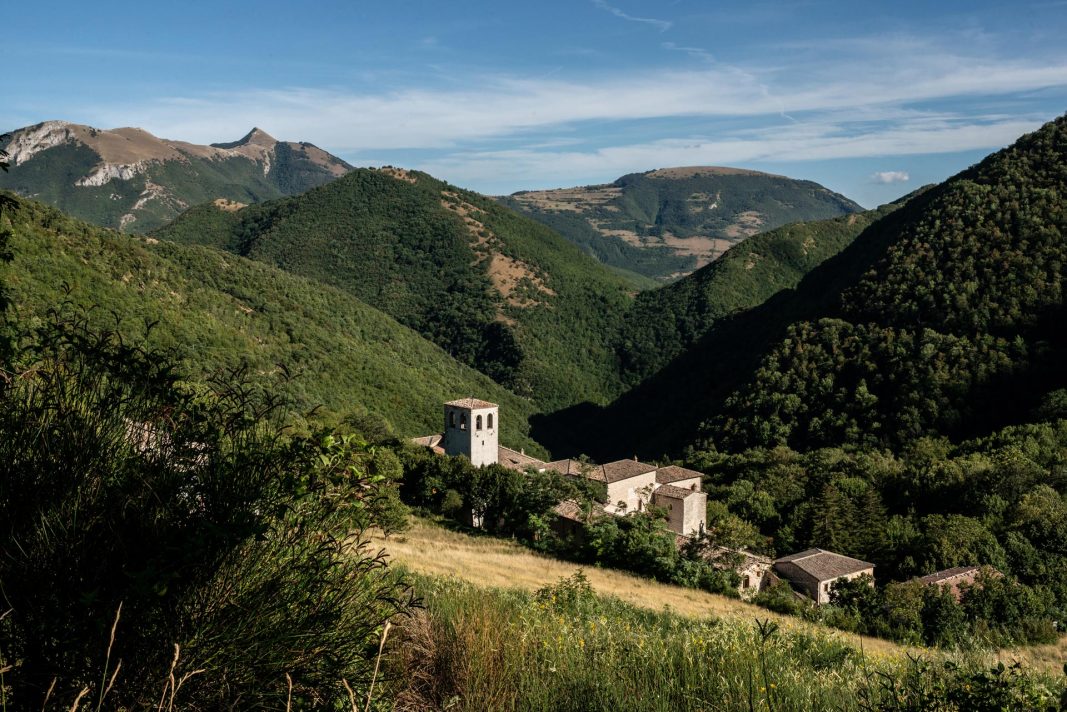
Fonte Avellana Monastery is located on the slopes of the forested area of Mount Catria (1701 m) at 700 meters on the sea level. The origins of the Monastery are placed around 980 a.C, when some hermits chose to build the first cells of a hermitage that in the course of centuries has become the current monastery. Fonte Avellana (PU), 27 agosto 2020.
|
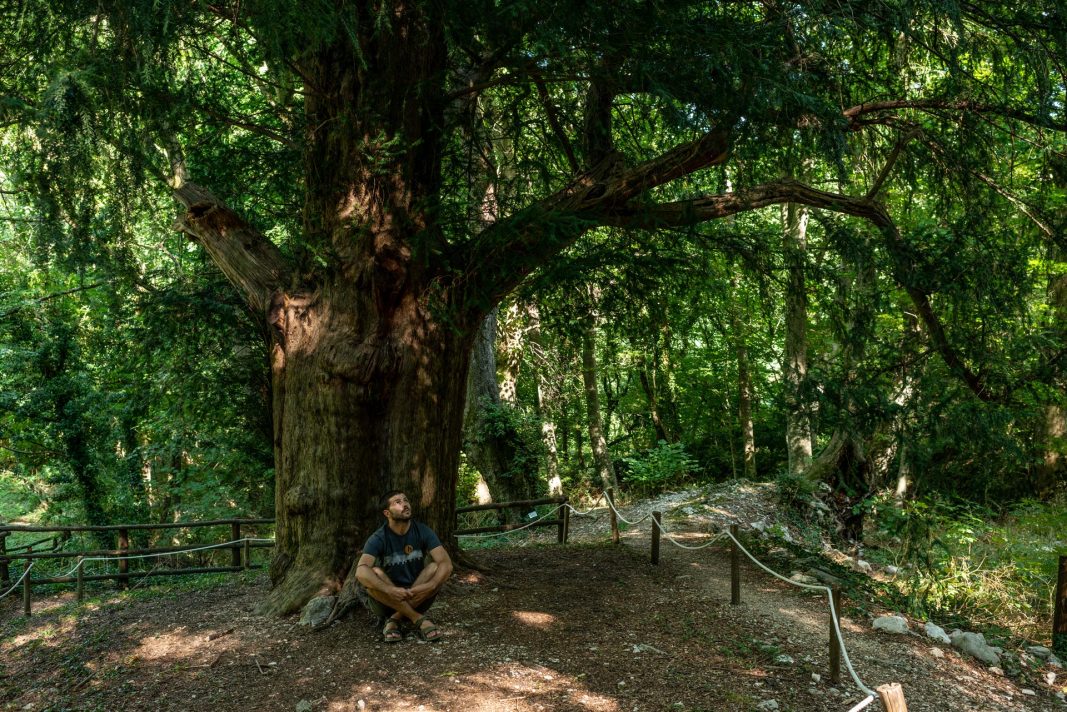
Naturalist Francesco Martinelli sits under the 600 years old yew, Taxus baccata, also known as the "tree of death". All parts of the plant are toxic except for the berries. The active ingredient responsible for the toxicity of
branches, leaves and seeds is an alkaloid, the tassin. Its common name derives from the Greek tóxon which means bow/arrow, while the name "tree of death" was also partly due to its use in the making of poisonous darts,
thanks to its toxicity. Fonte Avellana (PU), 27 agosto 2020.
|
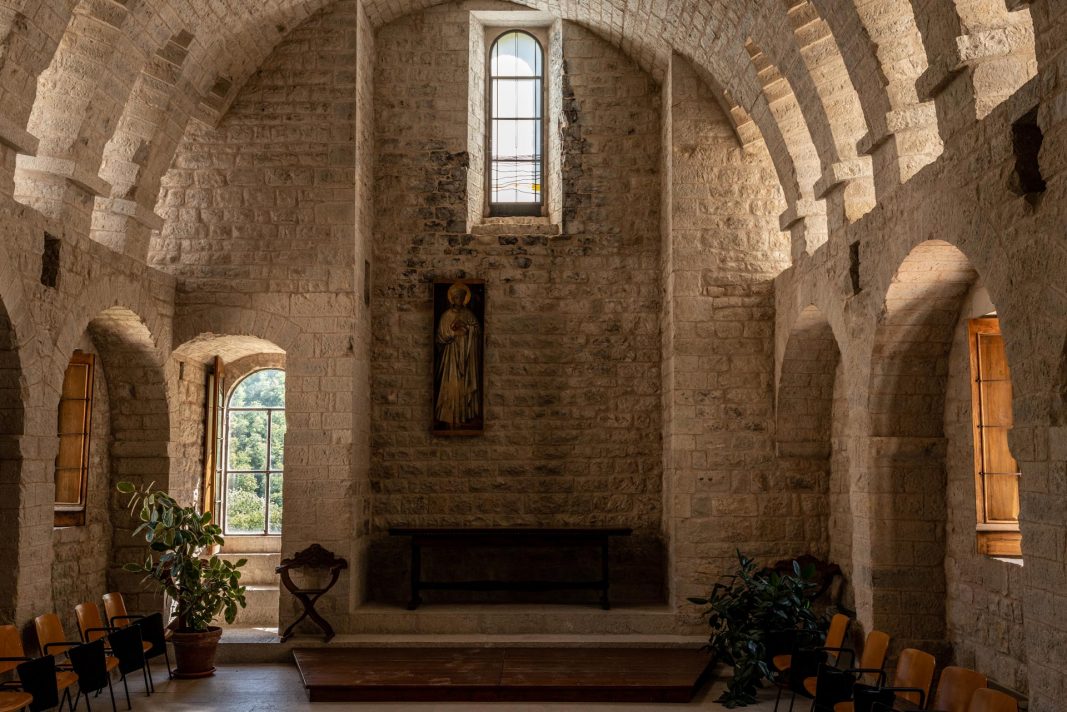
The scriptorium of the monastery was restored in 1958 and today it is used for
spiritual meetings. The Monastery scriptorium was built in the sec. XII and is the place where the monks transcribed by hand the classical Greek, Latin and precious texts on ancient parchment. Fonte Avellana (PU), 27 agosto 2020.
|
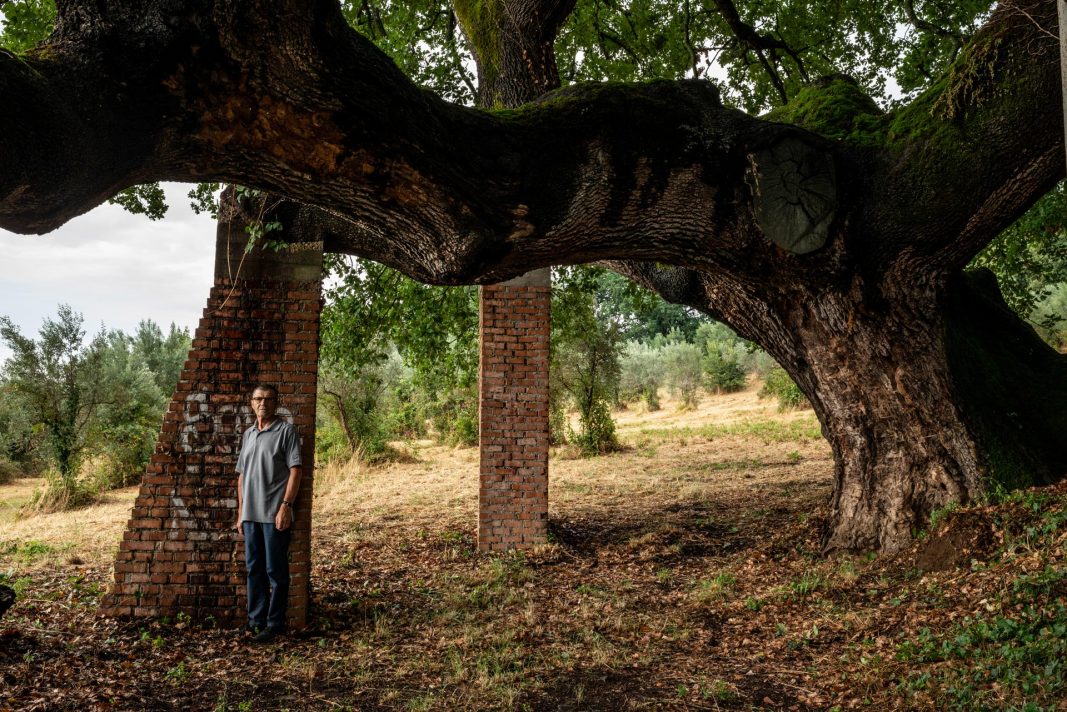
Marino, the housekeeper of Villa Lancellotti, poses next to one of the retaining walls holding the huge oak's arms that is named after the arch doorway of Villa Falconieri, beside which the oak grew. Villa Falconieri was
built in 1500 and overhauled by Cardinal Borromini in the first half of 1600: between these two dates the young oak plant began to grow. Frascati (RM), 17 luglio 2020.
|
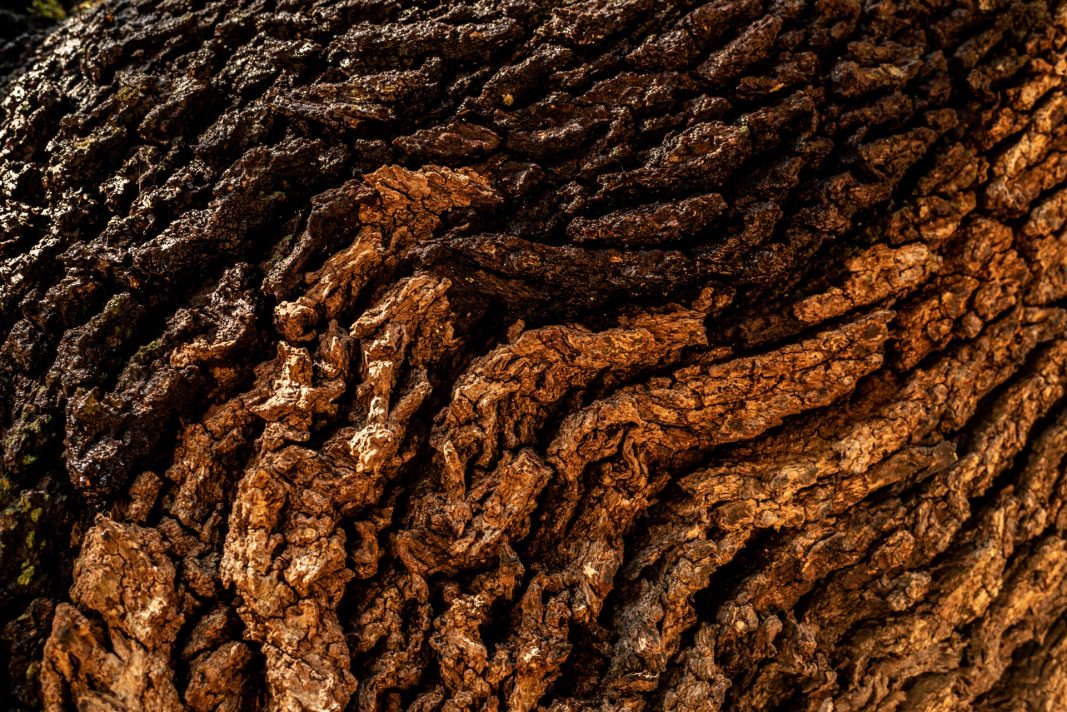
The bark of the majestic oak is deeply furrowed and folded showing lines of
different colors. Frascati (RM), 17 luglio 2020.
|
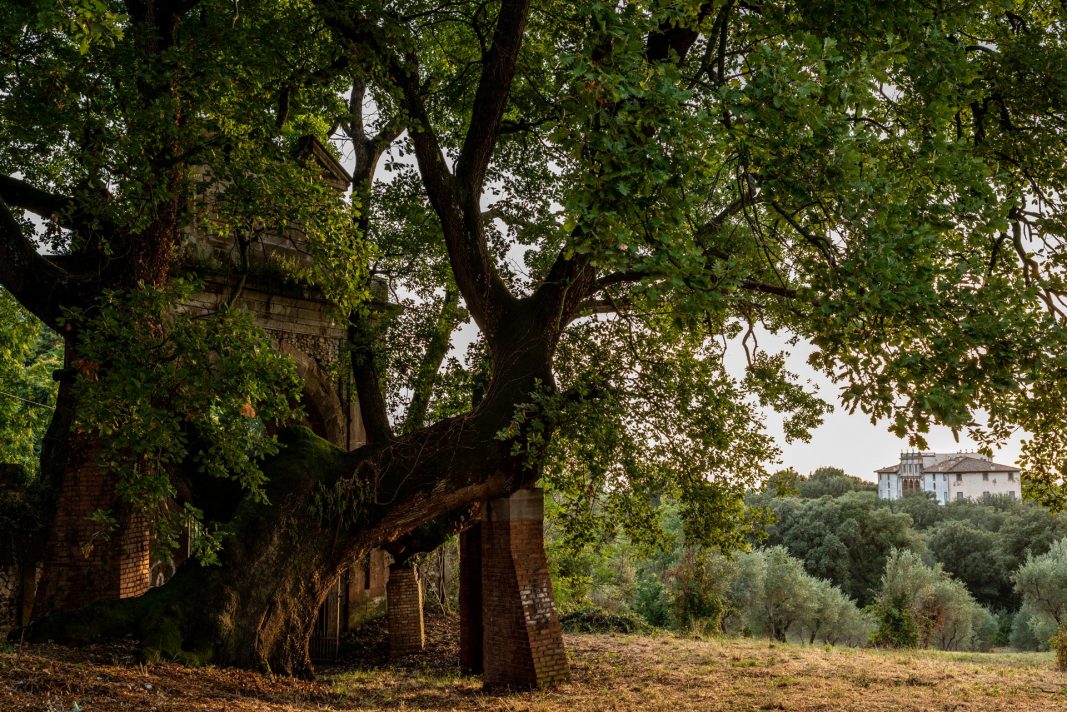
The oak tree, Quercus pubescens, as seen from inside Villa Falconieri's estate, measures approximately 25m in height with a circumference of the trunk of 6.10m. The foliage reaches a circumference of 36 meters and it is estimated to be more than 500 years old. In the background, Villa Lancellotti can be seen. Frascati (RM), 17 luglio 2020.
|
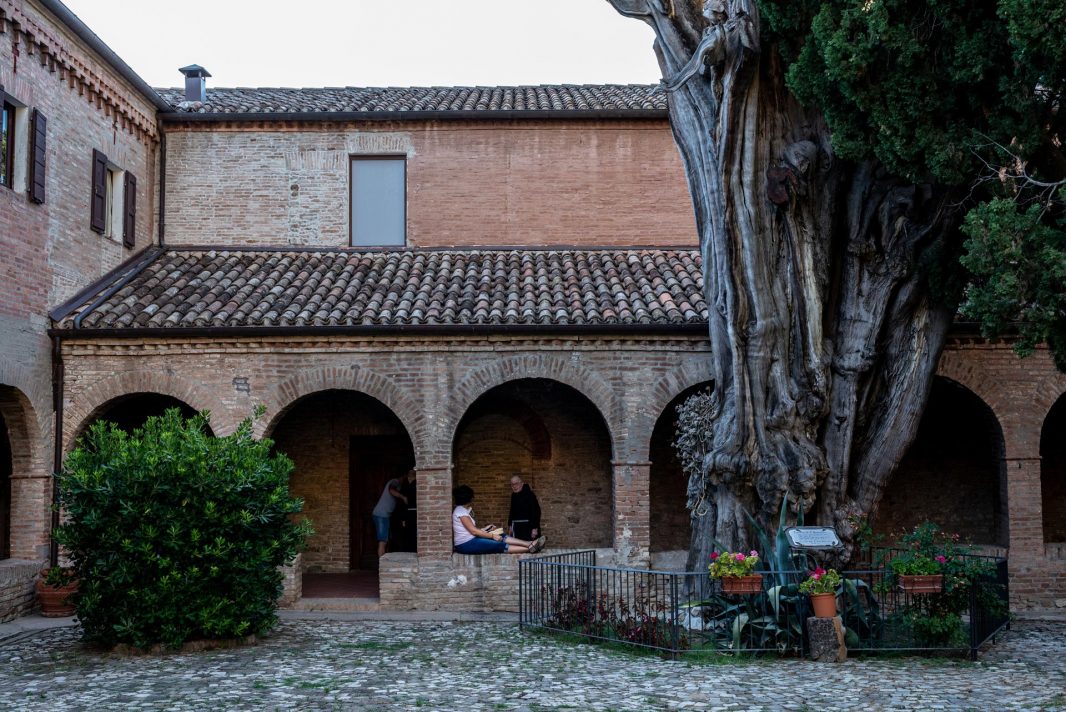
A Franciscan friar talks with some young under the cloister of Saint Francis convent under the huge cypress. Tradition tells that St. Francis, on the way to reach the convent next to the Church of Santa Croce, picked up a stick on the way to help him walking. Once he reached the the convent, he wanted to burn the stick and threw it in the fire. But the stick did not catch fire. He interpreted this prodigy as a sign, and planted the stick which generates the cypress. Villa Verucchio (RN), 6 luglio 2020.
|
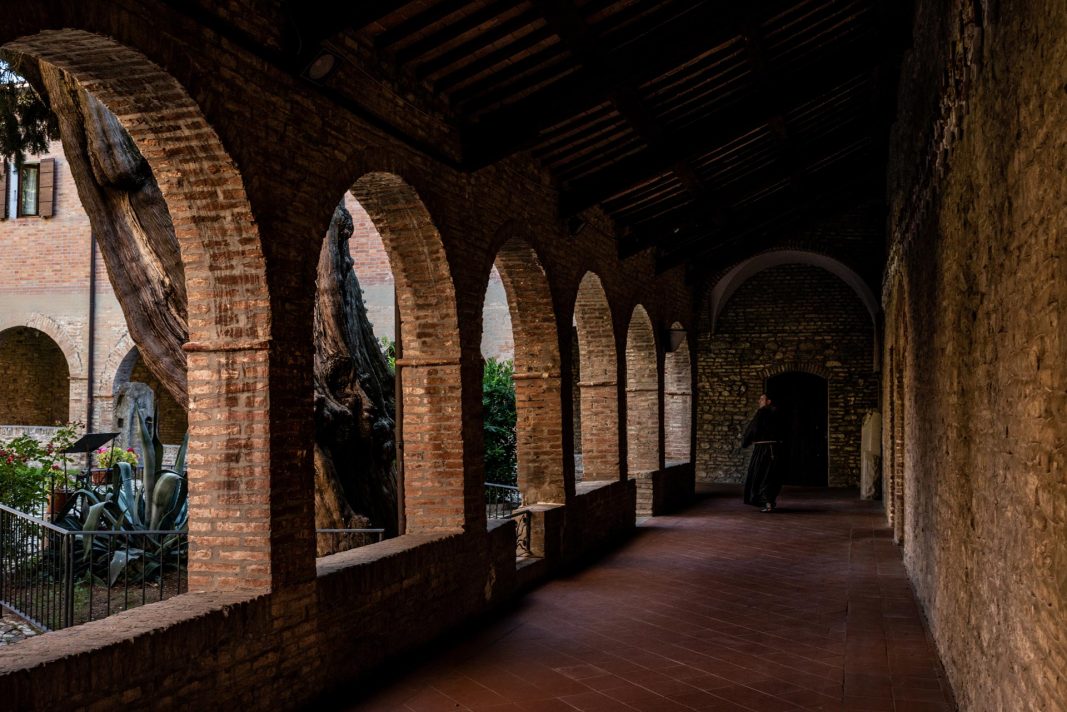
The convent of St. Francesco was built in 1215 by Brother Elias, St. Francis disciple, and is the oldest Franciscan monastery in Emilia Romagna region. The most recent botanical report has established that the cypress was
unequivocally planted at the beginning of 13th century. The age is therefore 800 years old. The circumference of the trunk near the ground is 5.15 m, while just under the divarications of the first branches it reaches a circumference of 7.37 m. Villa Verucchio (RN), 6 luglio 2020.
|
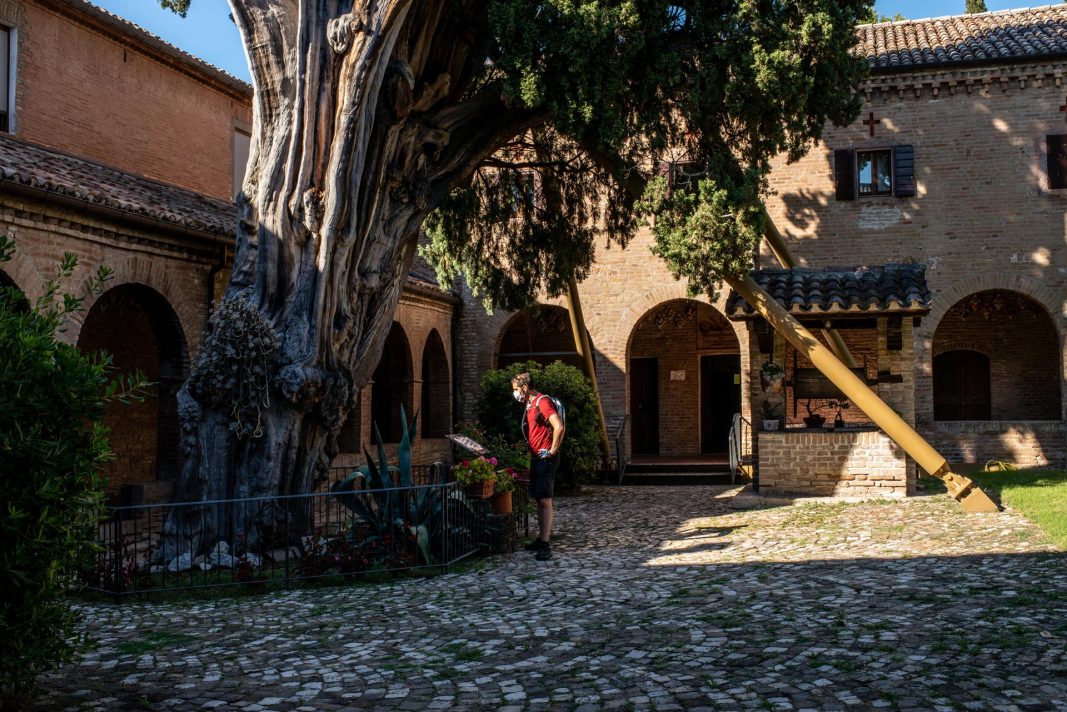
The cypress' scientific name is Cupressus sempervirens. Many visitors come in
pilgrimage to this giant of the Franciscan convent to collect its berries (galbuli) from the ground in the hope that they will germinate, giving rise to new "blessed" plants. Villa Verucchio (RN), 6 luglio 2020.
|
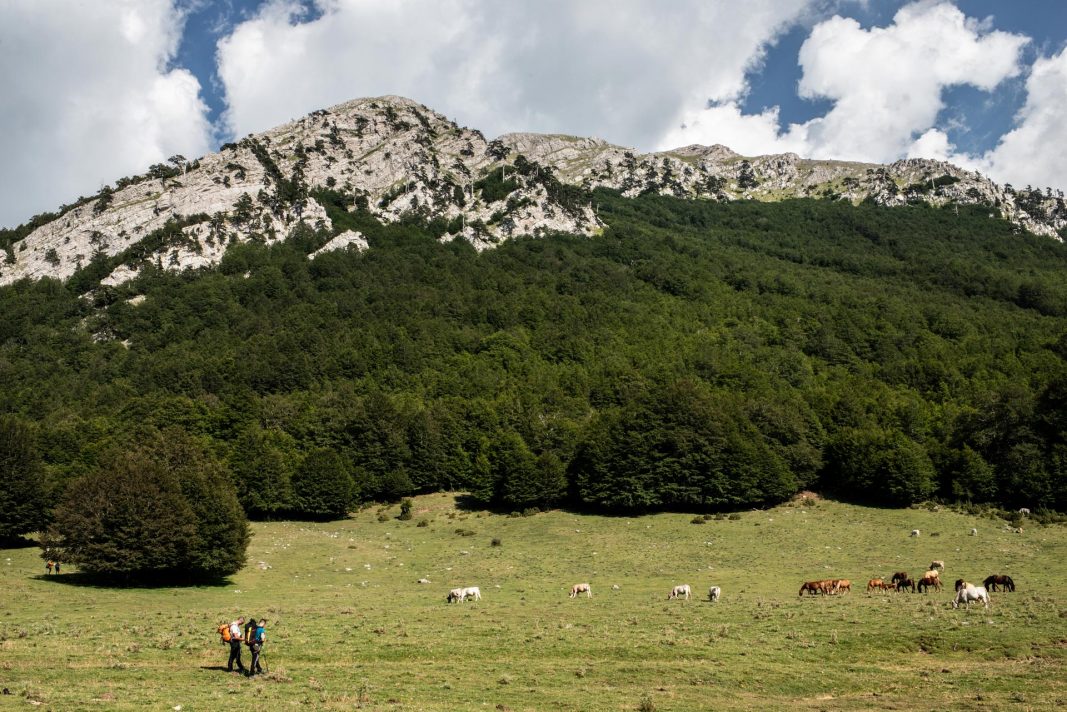
Luca Franzese, Guide of Pollino National Park, and Carmine Lo Tufo walk along Piano del Gaudolino, on the path to reach the Patriarch. Monte Pollino (2248 m) rises in the background. High altitude tree populations are sparse, as are the Loricate pines of Pollino, whose single individuals grow far apart from
each other. Pollino Loricato pines derive from a Balkans original nucleus which, following tectonic events and sea level rise, remained isolated in this region, the only one in Italy. Pollino (CZ), 30 luglio 2020.
|
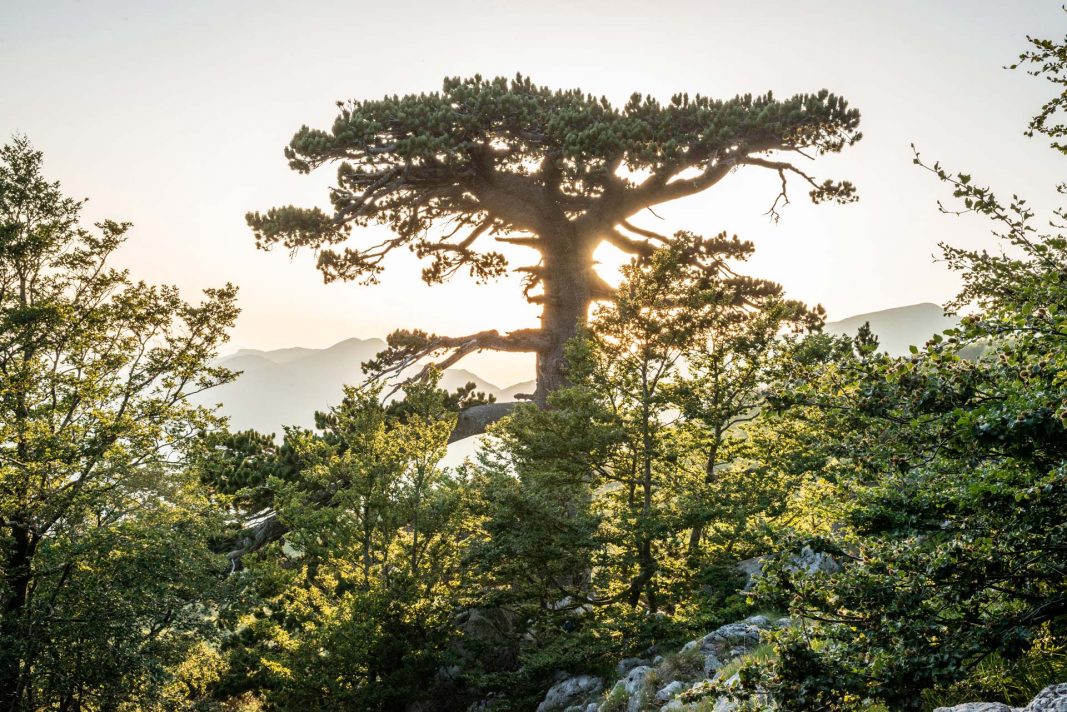
The Patriarch of Pollino is an old Loricate pine (Pinus leucodermis), 600 years old. Its massive roots anchor it firmly to the rocky and poor ground, typical of high altitudes (above 2000m). It's a very frugal species, which manages to live on sterile cliffs and ridges. It needs just some spring water and few summer
storms. Its accretions are very limited and therefore the species is long-living. Pollino (CZ), 30 luglio 2020.
|

Under the light of an almost full moon, Piano Ruggio is wrapped in a low fog, condensation of the high daytime humidity. Pollino (CZ), 30 luglio 2020.
|